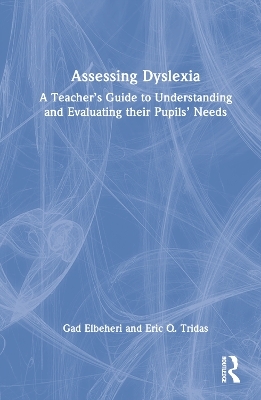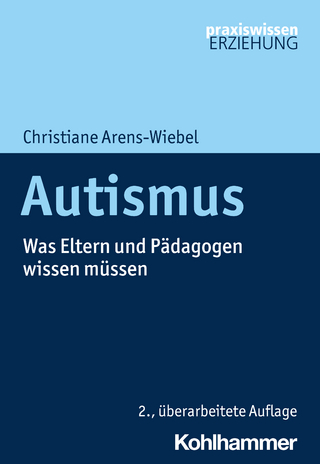
Assessing Dyslexia
Routledge (Verlag)
978-1-032-07917-2 (ISBN)
In today’s schools, teachers must screen and monitor for academic difficulties and are expected to use assessments to guide their instruction. Understanding the assessment of students with dyslexia gives teachers the knowledge to identify which skills need remediation, and the students’ strengths that can help them overcome their challenges. Assessing Dyslexia provides teachers with answers to questions they often have about assessment and is applicable not only to students with dyslexia but to all who struggle with reading.
Written in accessible terms throughout, this book offers information on understanding and interpreting psychoeducational reports and approaches on how to better communicate with parents and students regarding this process. By demonstrating how to use testing to guide their teaching, this book describes the why, how and what of assessment and promotes the self-sufficiency of teachers by providing them with a clear rationale for why particular instructional strategies should be used.
With encouragement for teachers to reflect on assessment critically and resources to expand their skill knowledge, this book provides a clear path to enhancing teachers’ practice and improving their pupils’ attainment. Assessing Dyslexia serves as a suitable reading for all teachers and represents a move from the "wait to fail" model to a test to teach approach, addressing the questions and anxieties of today’s teachers.
Gad Elbeheri is the founder and chairman of Global Educational Consultants, Egypt. He is Director at Large of the International Dyslexia Association (IDA) and Chair of the IDA Global Partners Committee. He is also a member of the Professional Advisory Board of the Learning Disabilities Association of America (LDA). Eric Q. Tridas is the founder and senior partner of The Tridas Group. He is an International Dyslexia Association (IDA) representative to the National Joint Committee on Learning Disabilities (NJCLD) and a member of the Professional Advisory Board of the Learning Disability Association of America (LDA).
Preface
Chapter One: The Nature of the Dyslexia Assessment
Introduction & Definition
Dyslexia: Prevalence & Signs
Importance of Dyslexia Assessment
Fundamentals of Dyslexia Assessment:
Types of Dyslexia Assessments
Purpose of Dyslexia Assessment
Chapter Two: The LEFT Model: A Process for Dyslexia Assessment
Components of Dyslexia Assessment
The Rule of Fours
The LEFT Model
Chapter Three: Listen
The Educational History
Behaviour and Emotional Regulation
Health
Environment
Chapter Four: Evaluate - Teacher Assessment of Language & Literacy
Checklists for Teachers
Screening Tools for Teachers
Error Analysis
Progress Monitoring & RTI
Behavioural Observations
Chapter Five: Evaluate -Understanding a Psycho-educational Evaluation Report
Test Types
Interpreting Test Results
Chapter Six: Formulation: Putting it Altogether
Formulation Structure: The Rule of Fours
Cognitive & Processing Skills
Academic Achievement
Attention & Executive Functions
Behavioural & Emotional Factors
Health & Family Medical History Factors
Social & Environmental Factors
Chapter Seven: Teach & Treat
Teach
Remediation
The Science of Reading: Structured Literacy
Assessment: Diagnostic Teaching
Accommodation
Treat
Chapter Eight: Useful Resources
References
| Erscheinungsdatum | 30.08.2022 |
|---|---|
| Zusatzinfo | 4 Line drawings, black and white; 4 Illustrations, black and white |
| Verlagsort | London |
| Sprache | englisch |
| Maße | 156 x 234 mm |
| Gewicht | 730 g |
| Themenwelt | Sozialwissenschaften ► Pädagogik ► Sonder-, Heil- und Förderpädagogik |
| ISBN-10 | 1-032-07917-7 / 1032079177 |
| ISBN-13 | 978-1-032-07917-2 / 9781032079172 |
| Zustand | Neuware |
| Informationen gemäß Produktsicherheitsverordnung (GPSR) | |
| Haben Sie eine Frage zum Produkt? |
aus dem Bereich


